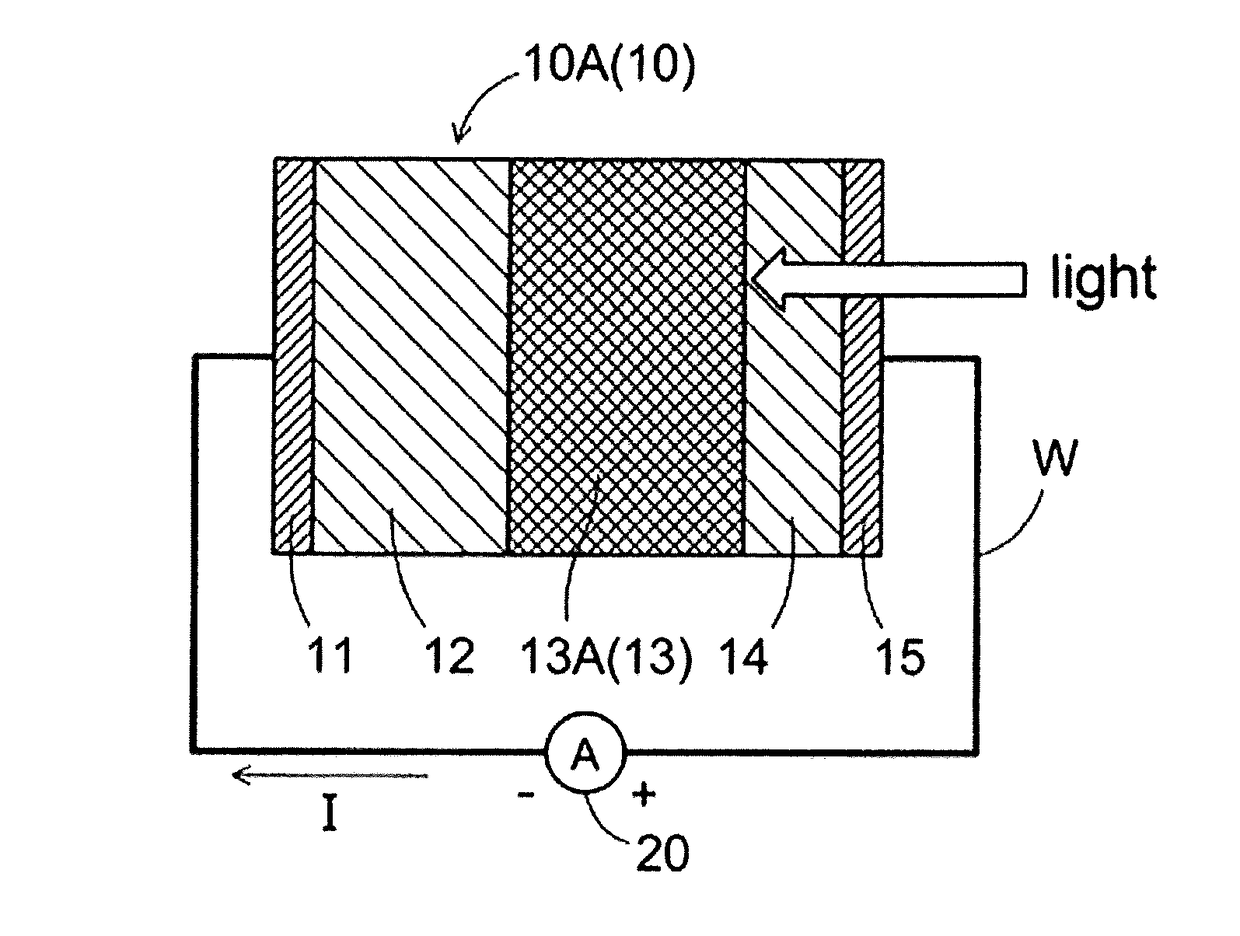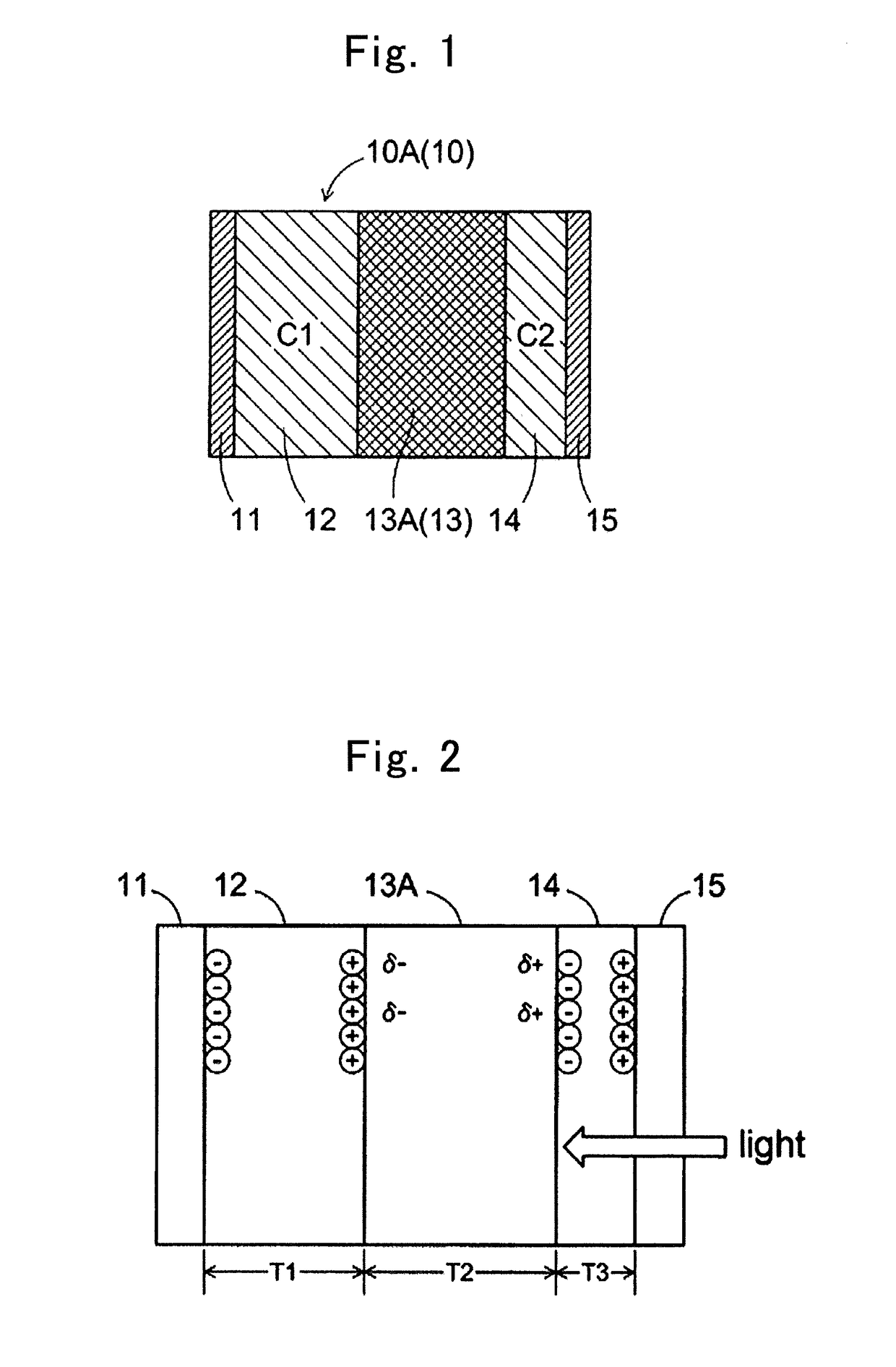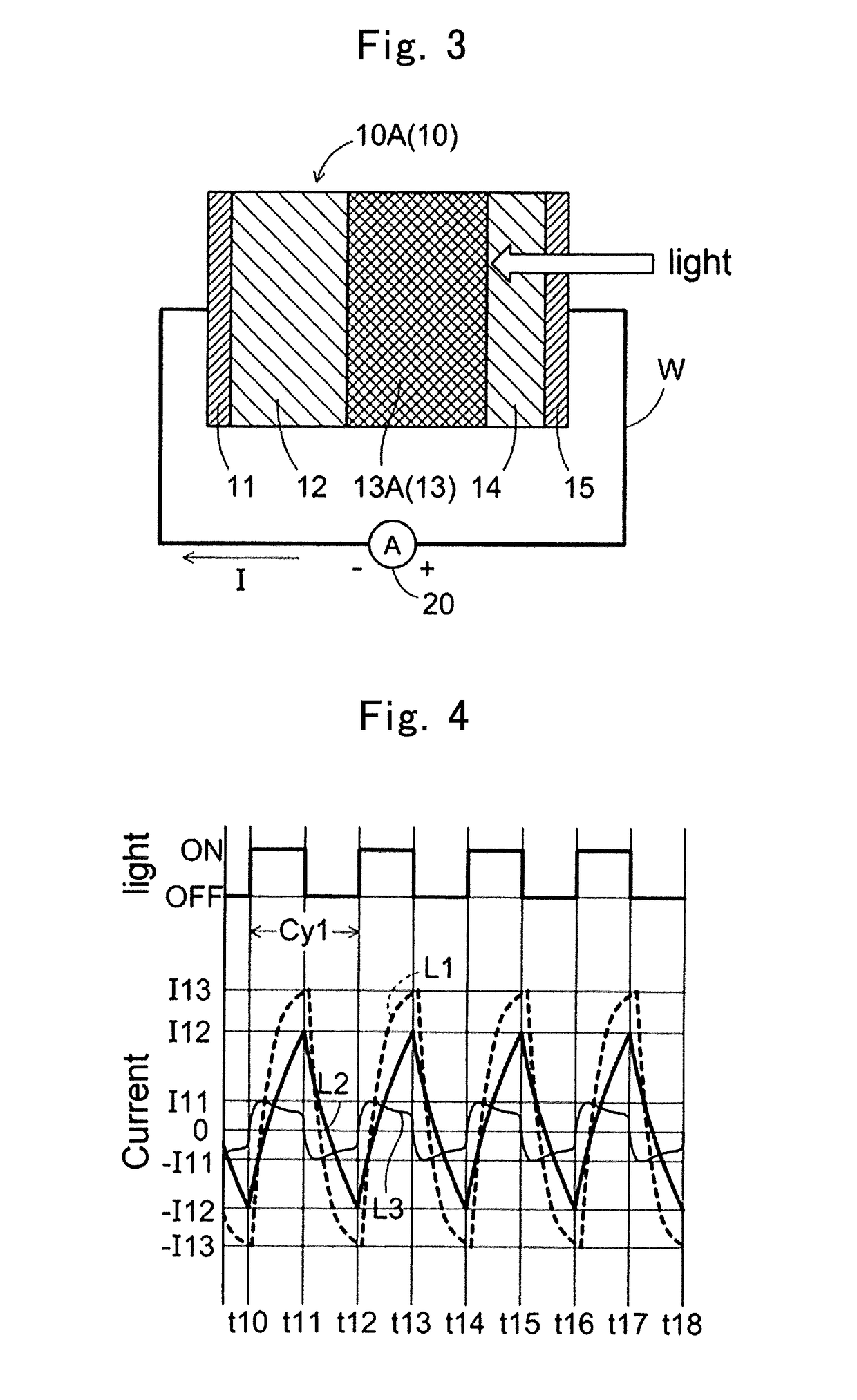Photoelectric conversion element
a conversion element and photoelectric technology, applied in the direction of capacitors, solid-state devices, electrolytic capacitors, etc., can solve the problems of difficult high-speed response, achieve the effect of enhancing response characteristics, reducing electric resistance, and upgrading the responsive speed of photoelectric conversion elements
- Summary
- Abstract
- Description
- Claims
- Application Information
AI Technical Summary
Benefits of technology
Problems solved by technology
Method used
Image
Examples
first embodiment
[0030]First Embodiment will be hereinafter described with reference to FIGS. 1 through 4. A photoelectric conversion element 10A is one of the examples or variations of a photoelectric conversion element 10. The photoelectric conversion element 10A comprises a first electrode 11, a first insulator 12, an organic semiconductor 13A, a second insulator 14, and a second electrode 15.
[0031]The first electrode 11 and second electrode 15 correspond to the claimed “a pair of electrodes.” It is not necessarily needed to use a transparent electrode, which exhibits optical transparency, for the first electrode 11 and second electrode 15 as far as they have an elemental structure capable of optically exciting the organic semiconductor 13A directly. However, when exciting the organic semiconductor 13A by way of one of the electrodes, the electrode is required to exhibit transparency. The following are exemplary materials for transparent electrically conducting member: tin oxide with antimony or ...
second embodiment
[0061]A photoelectric conversion element 10B according to Second Embodiment of the present invention will be hereinafter described with reference to FIGS. 5 and 6. Note that, in order to concisely illustrate and describe Second Embodiment, descriptions on the same constituents as those employed in First Embodiment will be omitted by designating them with identical reference numerals or symbols unless specified otherwise explicitly. Hence, descriptions on Second Embodiment will be hereinafter provided mainly regarding only the features that are distinct from those of First Embodiment.
[0062]The photoelectric conversion element 10B illustrated in FIG. 5 is one of the examples of the photoelectric conversion element 10. The photoelectric conversion element 10B comprises the first electrode 11, the first insulator 12, an organic semiconductor 13B, the second insulator 14, and the second electrode 15. The photoelectric conversion element 10B differs from the photoelectric conversion eleme...
PUM
| Property | Measurement | Unit |
|---|---|---|
| work functions | aaaaa | aaaaa |
| dark current | aaaaa | aaaaa |
| thickness | aaaaa | aaaaa |
Abstract
Description
Claims
Application Information
 Login to View More
Login to View More - R&D
- Intellectual Property
- Life Sciences
- Materials
- Tech Scout
- Unparalleled Data Quality
- Higher Quality Content
- 60% Fewer Hallucinations
Browse by: Latest US Patents, China's latest patents, Technical Efficacy Thesaurus, Application Domain, Technology Topic, Popular Technical Reports.
© 2025 PatSnap. All rights reserved.Legal|Privacy policy|Modern Slavery Act Transparency Statement|Sitemap|About US| Contact US: help@patsnap.com



